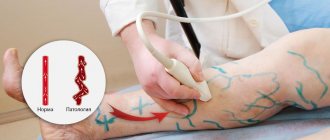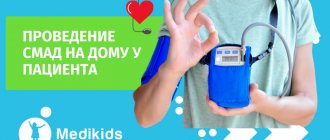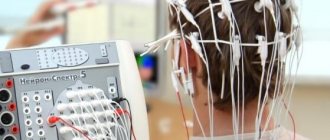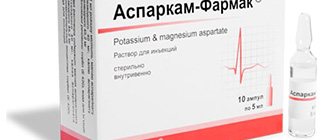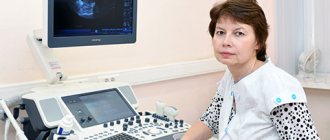In the AVENU medical centers (Rostov-on-Don and Bataysk) you can do a heart electrocardiogram (heart ECG). Low cost of the procedure. Click to find out how much an ECG costs.
Functional diagnostics
Number: 347
A05.10.006
Electrocardiogram registration
500 rub.
Where can I get tested? Preparing for research
All prices are indicated without discounts. Smear collection - 150 rubles. Taking blood from a finger - 100 rubles Taking blood from a vein - 150 rubles.
Electrocardiography
(ECG) is the most common and easiest to perform method for studying the condition of the heart. The principle of the method is to record on special paper the recorded electrical potentials that arise during heart activity.
An electrocardiogram of the heart can detect disturbances in the nutrition of the heart muscle (ischemia, myocardial infarction), irregular heart function (arrhythmia, blockade), changes associated with hypertension (left ventricular myocardial hypertrophy), and many other dangerous abnormalities.
Decoding the electrocardiogram
The electrocardiogram is deciphered by a doctor, who, based on the data received, forms his conclusion: he describes the correctness of the heart rhythm, heart rate, as well as all detected pathological changes. The ECG report allows the cardiologist to confirm the suspected diagnosis and prescribe adequate treatment.
FAQ
Why is an ECG done?
An electrocardiogram of the heart can detect disturbances in the nutrition of the heart muscle (ischemia, myocardial infarction), irregular heart function (arrhythmia, blockade), changes associated with hypertension (left ventricular myocardial hypertrophy), and many other dangerous abnormalities.
How is an electrocardiogram performed?
Fast and painless. The patient needs to lie on the couch (on his back), with his hands at his sides. Electrodes are placed on the chest, legs and arms, the machine (electrocardiograph) is turned on, and the ECG is recorded on special paper. The study lasts about 10 minutes.
Who is contraindicated for performing an ECG?
If we talk about a regular electrocardiogram (without stress tests), there are no contraindications for performing an ECG.
Indications for ECG
The referral for the procedure is given by a cardiologist
.
Many groups of people should undergo regular ECGs in order to detect diseases early. Risk factors for heart disease include:
- smoking;
- age over 40 years;
- obesity;
- increased cholesterol levels in the blood;
- poor nutrition;
- passive lifestyle;
- the presence of abnormalities in the structure of the heart;
- increased level of stress;
- diseases of the nervous or endocrine system;
- diagnosed vascular atherosclerosis.
- increased physical activity
An unscheduled ECG is recommended for the following symptoms:
- chest pain;
- palpitations and interruptions;
- shortness of breath;
- high blood pressure;
- chest injury;
- suspicion of acute and chronic heart disease (for example, with symptoms of coronary heart disease).
If you notice the above symptoms, do not worry right away. Many of them - for example, shortness of breath or high blood pressure - occur during stress and physical activity. It is necessary to monitor your own condition and the dynamics of symptoms. If signs of heart disease bother you even in the absence of exercise, or do not improve over a long period of time, you should consult a cardiologist.
for examination.
Preparing for electrocardiography
Our center’s specialists advise you to approach this procedure responsibly, despite the simplicity of its implementation.
- Electrocardiography allows you to evaluate the work of the heart muscle under normal conditions. This means that you should not feel nervous or tired during the test. Therefore, before the ECG you need to get a good night's sleep and avoid physical activity in the morning;
- You should also not overload your stomach. It is best to do an ECG on an empty stomach. If the procedure is performed after lunch, eat a light breakfast, but no later than two hours before the procedure. On the day of the procedure, you need to reduce your fluid intake, since its excess in the body can affect the functioning of the heart muscle;
- It is advisable not to drink coffee, strong teas or energy drinks on the day of the procedure. Caffeine stimulates increased cardiac activity, therefore, ECG results will be biased;
- In the morning before the procedure, take a shower, but avoid using fatty and oily lotions and creams. These substances create a thin film that impairs the contact of the electrodes with the skin;
- 15-20 minutes before the procedure, you need to sit quietly, relax and restore your breathing.
What is cardiac ultrasound?
Diagnosing the heart using ultrasound is a fairly new method used in cardiology, called echocardiography. The procedure is performed using a special device - an electrocardiograph, which regenerates ultrasound, the rays of which penetrate through the chest, determining the condition of the soft tissues and the thickness of the myocardium. This technique is absolutely safe for the patient. In addition, it has high information content and reliability of the results. The procedure is necessary for:
- determination of congenital pathology in children.
- identifying any diseases in adults;
- confirmation of the diagnosis of heart attack;
- thrombosis detection;
- detecting tumors in the breast;
- monitoring the state of the myocardium.
An ultrasound of the heart must be performed in cases where a person has abnormalities in the functioning of the heart that cannot be determined using an ECG or the diagnosis needs to be confirmed.
Ultrasound can reveal:
- Hidden heart defects;
- Enlargement and compaction of the myocardium;
- Accumulation of fluid in the heart;
- Pathological changes in the contractility of the organ;
- Establishing the speed and nature of blood movement through the aortas and chambers of the organ;
The disadvantage of the procedure is the inability to detect disturbances in the passage of electrical impulses.
This diagnosis allows you to identify even minor disturbances in the functioning of the heart that cannot be determined using an ECG.
Pros of the procedure
The advantages of ECG and ultrasound are very similar. Ultrasound diagnostics is also highly informative, painless, and harmless to the patient. The procedure does not require any special preparation. Using this method, you can assess the state of heart health, as well as track genodynamics.
In addition, the advantages of the procedure also include the fact that during the procedure the specialist can listen to how the heart beats. This allows you to determine whether there are extraneous noises in the heart. And due to the echogenicity of tissues and organs, a tumor can be noticed in time.
Cons of the procedure
The disadvantages of this procedure include:
- low resolution;
- limited image clarity;
- a lot of interference.
It should be mentioned that another disadvantage is the need to perform special training when it comes to diagnosing diseases of the abdominal organs.
Matters of the heart: why and who needs to do an ECG?
Useful articles / December 14, 2019
- Cardiovascular diseases are rapidly becoming younger every year: coronary artery disease is often found in those over 40, and myocardial infarction is diagnosed in people in their early twenties. Stress, nerves, and eating according to the principle of “whatever comes to hand” do not improve the health of the heart muscle. What to do to prevent the “fiery engine” from stalling?
According to the World Health Organization, cardiovascular disease (CVD) is the leading cause of death worldwide. No other pathology, including cancer, claims as many lives as problems with the heart muscle. About 18 million people die from CVDs every year. Doctors say the main reasons for the development of diseases are a sedentary lifestyle, frequent stress, poor diet and bad habits. 80% of premature heart attacks and strokes are preventable. Therefore, prevention and timely diagnosis now occupy a special place in the fight against diseases.
What is electrocardiography?
ECG is the main method in diagnosing heart function. Muscle activity is measured using electrodes connected to the body. The received information is displayed on the device monitor in graphical form or printed on paper. A cardiogram allows you to determine:
- heart rate; - heart rate; - various types of arrhythmias; — various types of conduction blockades; - myocardial infarction; — ischemic and cardiodystrophic changes; — Wolff–Parkinson–White syndrome; - ventricular hypertrophy; — position of the electrical axis of the heart.
It often happens that sudden heart problems are not actually sudden, but were not diagnosed in time. The role of the therapist is important, who will refer you for an ECG in time, and the cardiogram will tell you a lot. How often should an ECG be done? Is there a need for a cardiogram for preventive purposes?
“The frequency of the study depends on the disease, the treatment being carried out, the need to monitor the heart rhythm and its frequency,” explains Lyubava Kazakova, therapist at the ELISA Medical Center . — An ECG is recommended for persons over 40 years of age annually, even in the absence of complaints. This is necessary to identify asymptomatic heart disease. People who suffer from cardiovascular diseases, diabetes, rheumatism, or have had a stroke should undergo an ECG at least once every three months. And if suddenly, during treatment and for no apparent reason, pain appears in the chest, pain in the heart area, the lower third of the sternum of a pressing and squeezing nature, interruptions in the work of the heart, palpitations, shortness of breath at rest or with minor physical activity - this is a reason to perform an ECG in urgently. Persons under 40 years of age undergo an ECG if they have complaints (pain in the heart, back, chest, abdomen, neck; swelling in the legs; shortness of breath; fainting; interruptions in heart function) or after examination by a therapist/cardiologist if pathology from the cardiovascular system is suspected. It is also necessary to undergo an ECG in preparation for surgical treatment, pregnancy, planned hospitalization in a hospital, for issuing a sanatorium-resort card, a GTO certificate, and undergoing a medical examination upon admission to a kindergarten, school or university.
Indications for ECG
There is a general list of symptoms for which doctors refer patients for an ECG: - Pain in the chest and under the shoulder blade (often the pain radiates to the left arm or jaw); - swelling of the limbs and face; - labored breathing; - increased blood pressure; - shortness of breath even at rest; — chronic diseases of the musculoskeletal system (with damage to the cardiovascular system).
However, abnormalities in the functioning of the heart can sometimes be asymptomatic, or a person does not pay attention to these symptoms.
“For example, Wolf-Parkinson-White syndrome (WPW syndrome) is a congenital anomaly of the structure of the heart; in some patients, clinical manifestations may not be detected and can be detected during an ECG or Holter (24-hour) cardiogram monitoring,” explains Lyubava Kazakova . —Also, left ventricular hypertrophy recorded on the ECG may indicate the presence of hypertension. Even if the patient does not complain about increased blood pressure, for example, he simply does not control his blood pressure or his blood pressure rises only at night.
ECG interpretation
A cardiogram is the basis for diagnosing cardiovascular pathologies. On a cardiogram, experts see 5 main “teeth”. They are designated by the letters P, Q, R, S, T. They record periods of contraction and recovery of various parts of the heart muscle. The changes in the line on the paper reflect the cells' response to the impulses. The ECG is deciphered by a functional diagnostics doctor, a cardiologist, and in the absence of doctors’ data, the ECG is deciphered by a therapist. At an ambulance, an emergency ECG must be interpreted by a paramedic.
“The nurse who conducts the research should also see changes (myocardial infarction, atrial fibrillation and flutter, overload of the right or left parts of the heart), requiring an urgent examination by a doctor followed by possible hospitalization,” says Lyubava Kazakova . — I had a real case in the clinic, when a patient ran into the office without an appointment and asked to write out a referral for an ECG, which was urgently required for a medical examination at work. Since the patient is working, he could not wait for a ticket to see his therapist and turned to the one who was working at that moment. The patient was given a referral for an ECG, and his blood pressure was measured - it was normal. After 15 minutes, a nurse from the ECG room came up to me and asked me to come and look at the film, as she suspected a myocardial infarction. When I came to the office, to my surprise, the same man was lying there, who had only come in for directions and nothing bothered him. The cardiogram revealed a slight depression of the ST segment and a negative T wave. With a diagnosis of myocardial infarction without ST segment elevation, the patient was provided with emergency treatment, and an ambulance team was called for transportation to the hospital. The diagnosis was confirmed in the hospital and the patient received specialized care in a timely manner.
How is the ECG procedure performed?
The procedure is absolutely painless and usually does not take more than five minutes. No special preparation is required. The classic study is carried out with the patient at rest. If more detailed data is needed, the doctor may order additional tests. The advantage of the classical ECG technique can also be considered the absence of contraindications.
How to prepare for an ECG: - Get enough sleep before the study; - do not smoke on the eve of the study and do not drink alcohol; - reduce physical activity; - be moderate in diet.
Prevention of cardiovascular diseases
The earlier a person begins to monitor their heart, the lower the risk of developing early diseases. To maintain the health of blood vessels and heart muscle into old age, you need to: - be less nervous; - monitor your diet and avoid foods rich in cholesterol; - eliminate bad habits such as alcohol and smoking; - maintain physical activity; - regularly undergo cardiovascular examinations.
Remember that day after day our lifestyle leaves an imprint on the work of the heart. Negative influences always accumulate like a snowball and sooner or later cause a malfunction in the body. But following the simple principles of a healthy lifestyle strengthens the heart. Moreover, if all the above factors and good heredity are met, problems with the heart muscle may not be experienced at all. At the ELISA Medical Center, patients have access to an ECG service, which you can sign up for by calling. The cost of an ECG with and without interpretation can be found on the research page.
How is an ECG taken?
The procedure for taking an electrocardiogram takes place in a calm environment, the patient should not be nervous or worried. There is no special preliminary preparation for a heart study; however, in order for the results to be reliable, doctors categorically do not recommend that their patients drink alcohol, strong coffee, or energy cocktails on the day of the study. You should also not play sports, and you should also avoid junk food (at least 2-3 hours before the ECG).
In the diagnostic room, the patient will have to remove all clothing above the waist and expose the lower legs and arms. The procedure is performed in a lying position. The doctor treats the prepared areas of the body with alcohol and a special gel, after which he attaches electrodes (on suction cups) with cuffs.
The electrodes read information about the heart rhythm and send it to the electrocardiograph. The device processes the data and produces the result in the form of a graphical curve, which is printed on paper tape. In some modern modifications, the result is transferred immediately to the doctor’s computer.
The process of taking an ECG is short, usually takes 10-15 minutes. After completing the diagnosis, you need to cleanse your body of the remaining gel and get dressed. The interpretation of the results is usually performed by the doctor who performed the electrocardiogram or by the specialist who referred the patient for examination.
Contact a medical doctor to get an ECG (electrocardiogram) of the heart.
Why do you need an electrocardiogram (ECG) of the heart?
An ECG makes it possible to obtain accurate information about the work of the heart and its condition during the procedure. The method is safe for health and completely painless, so it can be prescribed many times. This is especially valuable when the doctor needs to monitor the progress of the patient’s treatment.
An electrocardiogram allows you to:
- Determine the frequency of contractions.
- Identify conductivity flaws.
- Calculate the regularity of contractions.
- Diagnose the condition of the myocardium.
- Investigate possible electrolyte imbalances.
- Assess the general physical condition of the heart.
Thanks to an ECG, a cardiologist can identify both minor pathologies and serious dysfunctions of the organ. The results of the electrocardiogram are also invaluable in the treatment of non-cardiac pathologies (pulmonary embolism and others). A cardiogram helps to detect changes that occur in the heart: deviations of parameters from normal sizes, myocardial infarction and others.
